In the fast-paced world of kitchenware, colanders and strainers play a crucial role in food preparation. As a wholesaler or retailer, offering the right selection of these essential tools is key to meeting customer demands and driving sales. This comprehensive guide will help you navigate the market landscape, understand the different types of colanders and strainers available, and make informed decisions when sourcing these products.
Table of Contents
● Understanding the colander and strainer market landscape
● Types of colanders and strainers and their features
● Factors to consider when selecting colanders and strainers
Understanding the colander and strainer market landscape
The global colander and strainer market is experiencing steady growth, driven by the increasing popularity of home cooking and the rise of health-conscious consumers. According to a report by Technavio, the market is expected to grow at a CAGR of over 6% in 2024. The report also highlights the dominance of the Asia-Pacific region, which accounts for 44% of the market share.
Consumer trends are also shaping the market, with a growing focus on sustainability, multifunctionality, and innovative designs. As home cooking continues to rise in popularity, particularly in the wake of global events like the COVID-19 pandemic, the demand for efficient and durable kitchen tools has surged. This has led to an influx of new products and materials in the colander and strainer market, catering to diverse consumer needs and preferences.
Different Types of Colanders and Strainers and Their Features
When it comes to colanders and strainers, the variety available can be quite overwhelming. Each type has its own unique features and is suited for specific tasks in the kitchen. Let’s dive into the different types and what makes each one special.
Traditional Colanders
Traditional colanders are the classic kitchen tool that most people are familiar with. They are typically bowl-shaped with large perforations and are made from materials like stainless steel, plastic, or enamel-coated metal. These colanders are perfect for draining pasta or washing fruits and vegetables. They come in various sizes, from small personal use colanders to large ones suitable for commercial kitchens. The large holes allow for quick draining, making them a staple in any kitchen.
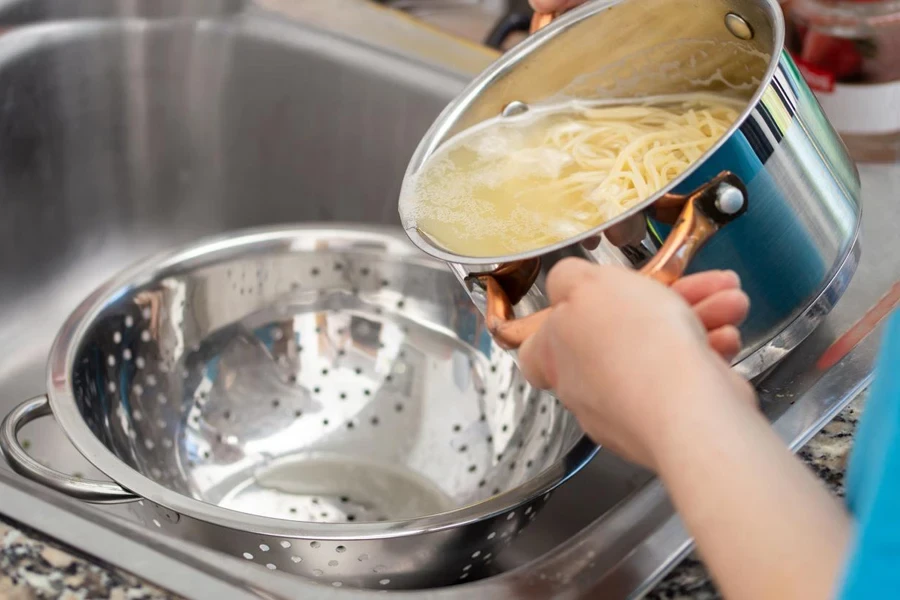
Fine Mesh Strainers
Fine mesh strainers are a must-have for more delicate tasks. These strainers are either conical or bowl-shaped and feature a fine mesh screen that is excellent for straining small particles from liquids. They are perfect for rinsing small grains like quinoa or rice and are often used in cocktail preparation to strain ice and herbs. The fine mesh ensures that even the smallest particles are caught, making them ideal for creating smooth sauces and purees.
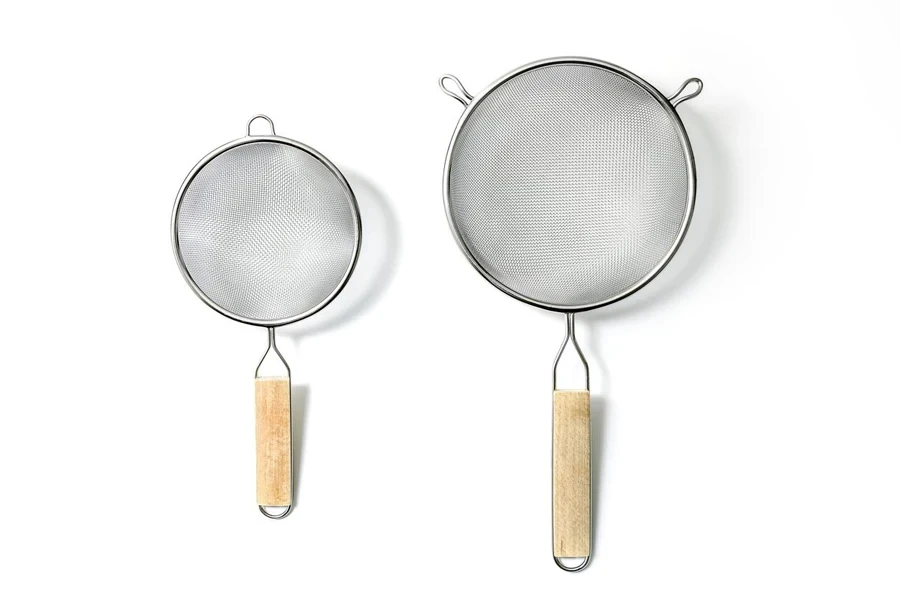
Chinois Strainers
A chinois strainer is a specialized tool with an extremely fine mesh. It has a conical shape and is used for creating ultra-smooth purees and sauces. Often, a chinois strainer comes with a pestle that helps press foods through the mesh. This tool is essential in professional kitchens where refined culinary techniques are required. The fine mesh of a chinois strainer ensures that no lumps or seeds make it through, resulting in a perfectly smooth texture.
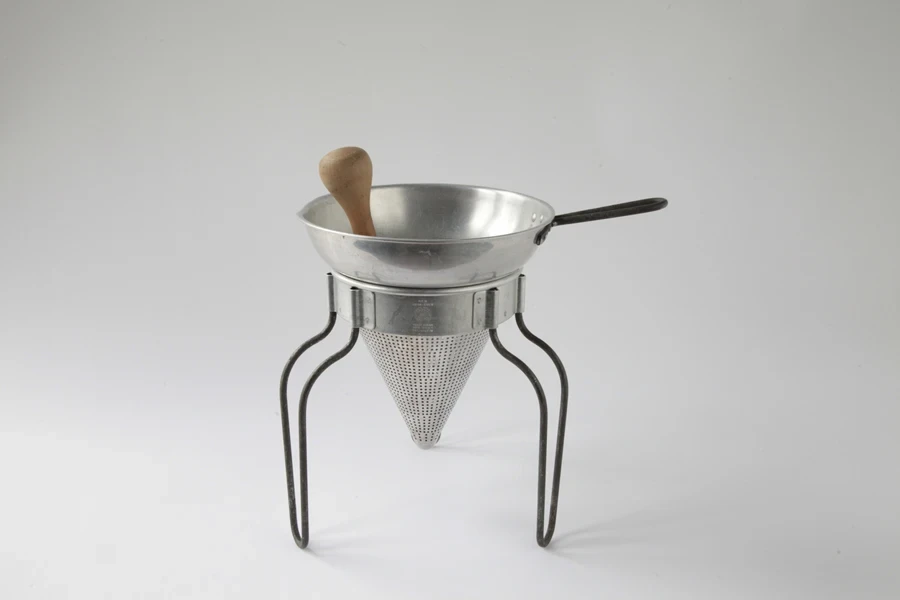
Over-the-Sink Colanders
Over-the-sink colanders are designed for convenience. They have an expandable design that fits across sink basins, providing hands-free draining and rinsing. This feature is particularly useful in busy kitchens where multitasking is necessary. These colanders are often made of silicone or plastic, which makes them easy to store when not in use. The hands-free design allows you to focus on other tasks while your food drains.
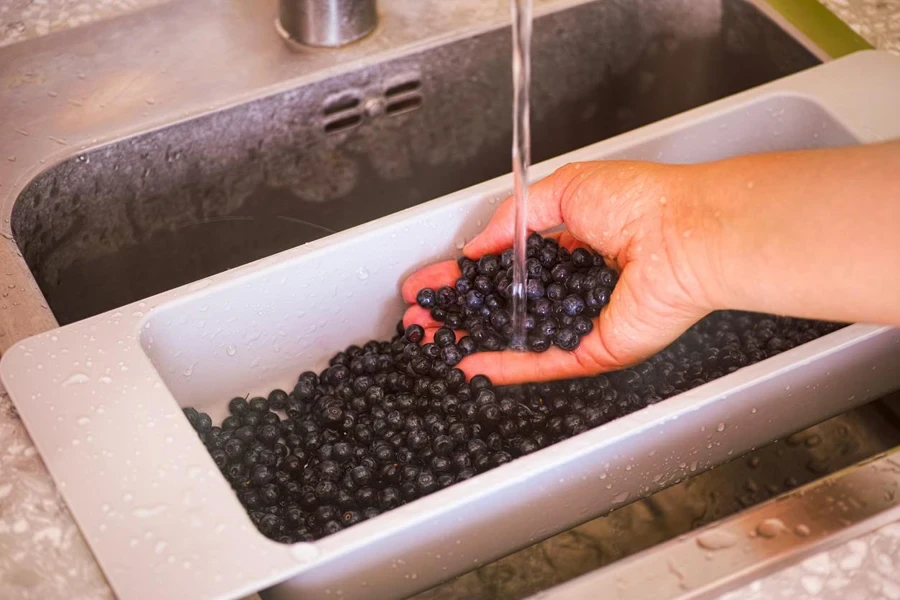
Collapsible Colanders
Collapsible colanders are a great solution for those with limited storage space. Made from silicone or flexible plastic, these colanders can be folded flat when not in use. They are ideal for small kitchens or for those who only need a colander occasionally. Despite their compact size, collapsible colanders are sturdy and effective for draining and rinsing a variety of foods.
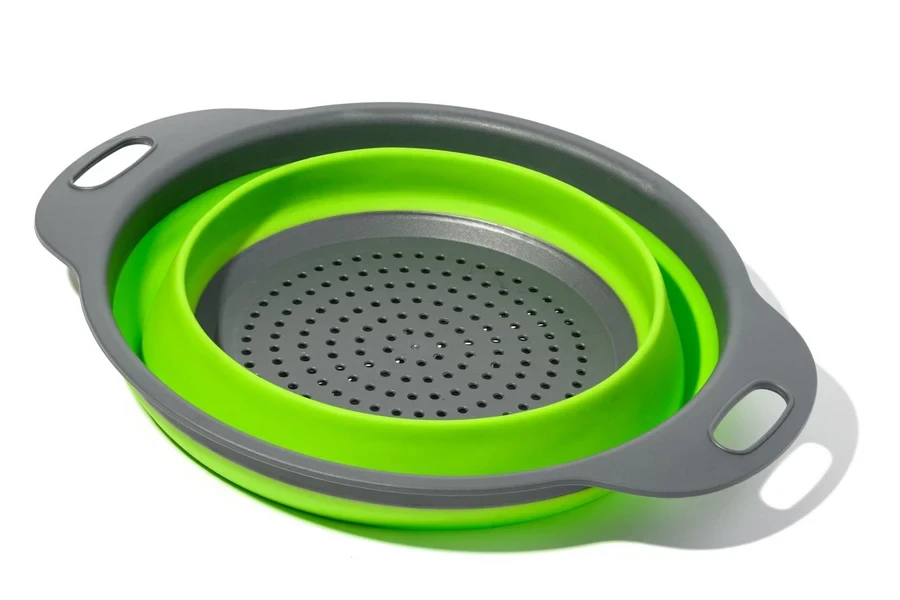
Salad Spinners
Salad spinners combine a colander basket with a spinning mechanism to efficiently remove excess water from leafy greens and herbs. This tool is essential for anyone who enjoys fresh salads, as it ensures that your greens are dry and ready to be dressed. Salad spinners often double as serving bowls, making them a versatile addition to your kitchen. They are available in both manual and electric versions, catering to different preferences.
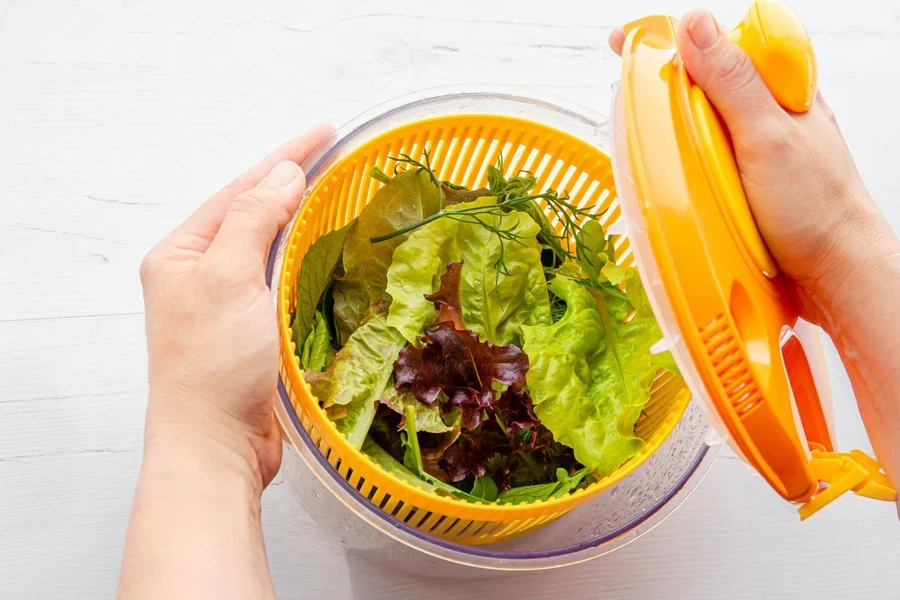
Clip-On Strainers
Clip-on strainers are a space-saving solution that attaches directly to pots and pans. This allows for easy, one-handed draining without the need for a separate colander. Clip-on strainers are compact and ideal for small batches or kitchens with limited counter space. They are particularly useful for draining pasta or vegetables directly from the cooking pot.
Berry Colanders
Berry colanders are specifically designed for washing and storing delicate fruits like berries. They feature a built-in drip tray that prevents moisture accumulation, helping to extend the shelf life of your fruits. These colanders are often made from BPA-free plastic or silicone and are small enough to fit in your refrigerator. The design ensures that your berries stay fresh and dry, ready to be enjoyed.
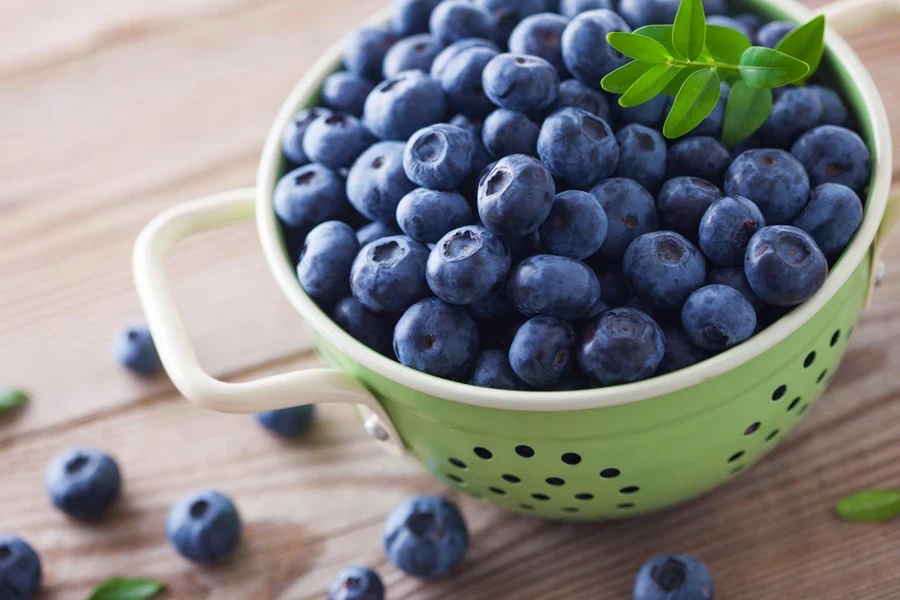
Things to Consider When Selecting Colanders and Strainers
When sourcing colanders and strainers for retail or wholesale, it’s essential to consider several factors to ensure you are offering high-quality, versatile, and durable products that meet the needs of your customers. Here are key aspects to keep in mind:
Material
The material of colanders and strainers significantly impacts their durability, functionality, and appeal to different customer segments. Stainless steel is a popular choice due to its durability, rust resistance, and ease of cleaning. It is ideal for both home and professional kitchens. Plastic colanders are lightweight and affordable, making them suitable for budget-conscious consumers, although they may warp or stain over time. Silicone options are flexible, heat-resistant, and easy to store, appealing to customers with limited kitchen space. Enamel-coated metal colanders offer an attractive appearance but may chip or crack, so they are often chosen for their aesthetic value.
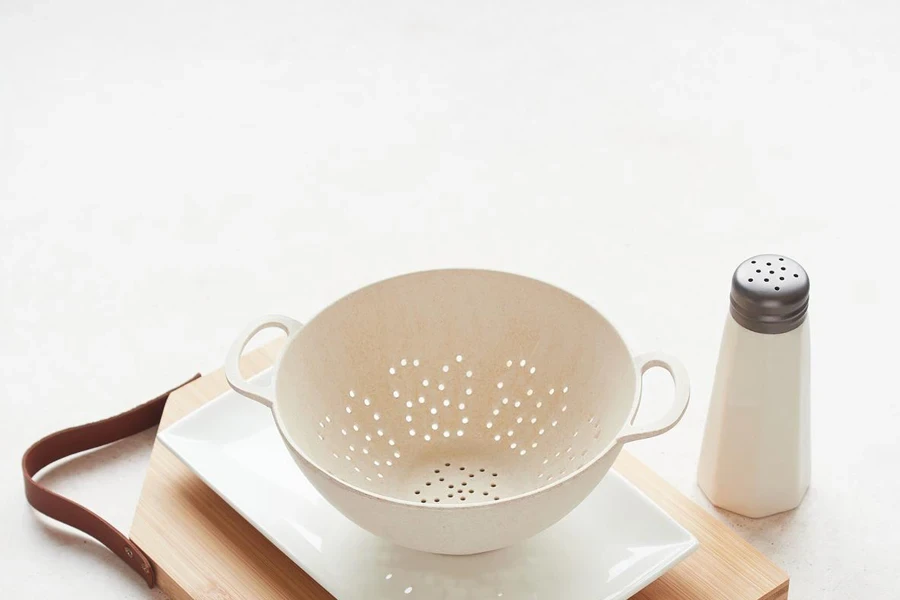
Size and Capacity
Understanding the typical volume of food your target customers prepare can help you stock the right sizes. Larger families or commercial kitchens may require bigger colanders, while smaller households might prefer more compact options. Ensure you offer a range of sizes to cater to different needs, from small personal use colanders to large commercial capacities.
Hole Size and Mesh Density
The size of the holes or the density of the mesh in colanders and strainers determines their suitability for various tasks. Larger holes are ideal for quick draining of pasta and vegetables, while fine mesh strainers are perfect for straining small particles or creating smooth purees. Offering a variety of options allows your customers to choose the right tool for their specific culinary tasks.
Ergonomics and Ease of Use
Comfort and ease of use are crucial factors for both home cooks and professional chefs. Look for colanders and strainers with comfortable handles and a stable base to ensure easy maneuvering. Consider the weight of the products, especially for larger sizes, to ensure they are user-friendly. Additionally, evaluate the ease of cleaning and maintenance, including dishwasher compatibility, as these features can be significant selling points.
Versatility and Multifunctionality
Products that serve multiple purposes can be more appealing to customers looking to maximize their kitchen tools’ utility. Colanders that double as serving bowls or storage containers, or sets that offer various sizes for different tasks, can provide added value. Highlighting these multifunctional features can attract customers seeking versatile kitchen solutions.
Durability and Quality
Investing in high-quality products is essential for long-term customer satisfaction and repeat business. Ensure the colanders and strainers you stock are made from durable materials and have a solid construction. Reading customer reviews and expert recommendations can help you gauge product reliability. Offering warranties or guarantees on premium products can also enhance customer confidence in their purchase.
Storage Considerations
Space efficiency is a significant concern for many customers, especially those with smaller kitchens. Evaluate the available kitchen storage space and consider stocking collapsible or nesting options for compact storage. Hanging options or stackable designs can also be attractive features for customers looking to save space.
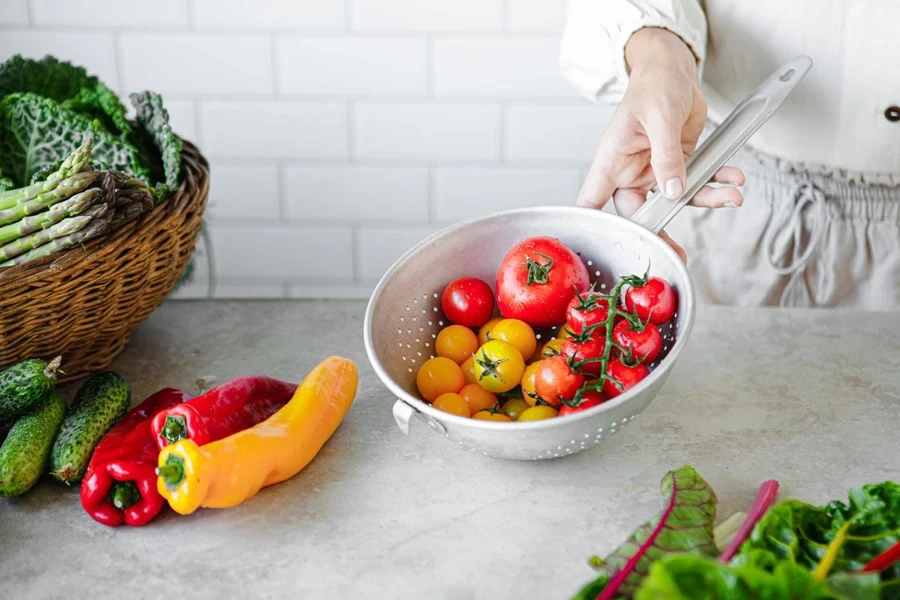
Sustainability and Environmental Impact
With increasing consumer awareness of environmental issues, offering eco-friendly products can be a significant selling point. Look for colanders and strainers made from recycled or sustainable materials. Consider the product’s lifespan and potential for recycling, and opt for brands with sustainable manufacturing practices. Highlighting these features can attract environmentally conscious customers and enhance your brand’s reputation.
By considering these factors, you can ensure that you are stocking a range of high-quality, versatile, and durable colanders and strainers that meet the diverse needs of your customers. This approach will not only enhance customer satisfaction but also drive sales and foster long-term loyalty.
Conclusion
Selecting the perfect colanders and strainers for your business requires a deep understanding of the market landscape, consumer trends, and product features. By considering factors such as material, size, hole pattern, and ergonomics, you can curate a product range that meets the diverse needs of your customers. Stay informed about market trends and continuously adapt your offerings to stay ahead of the competition in this dynamic kitchenware segment.




